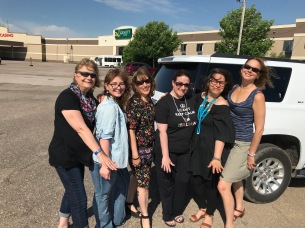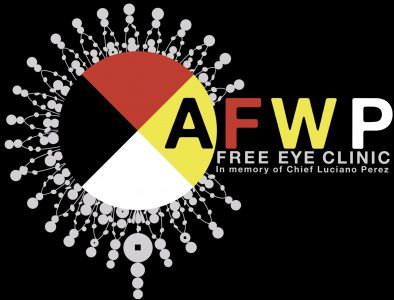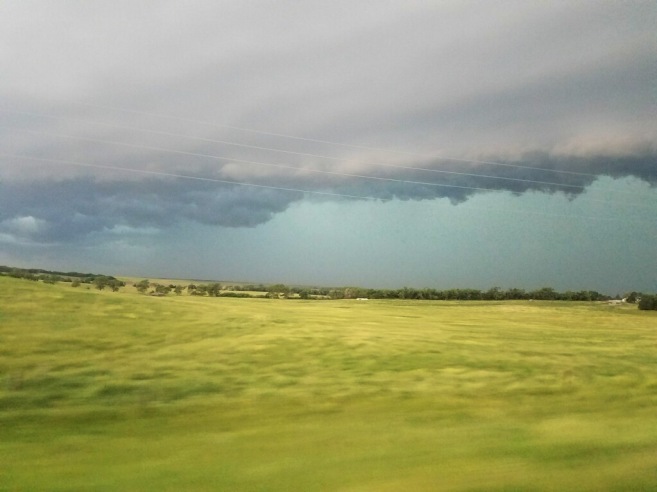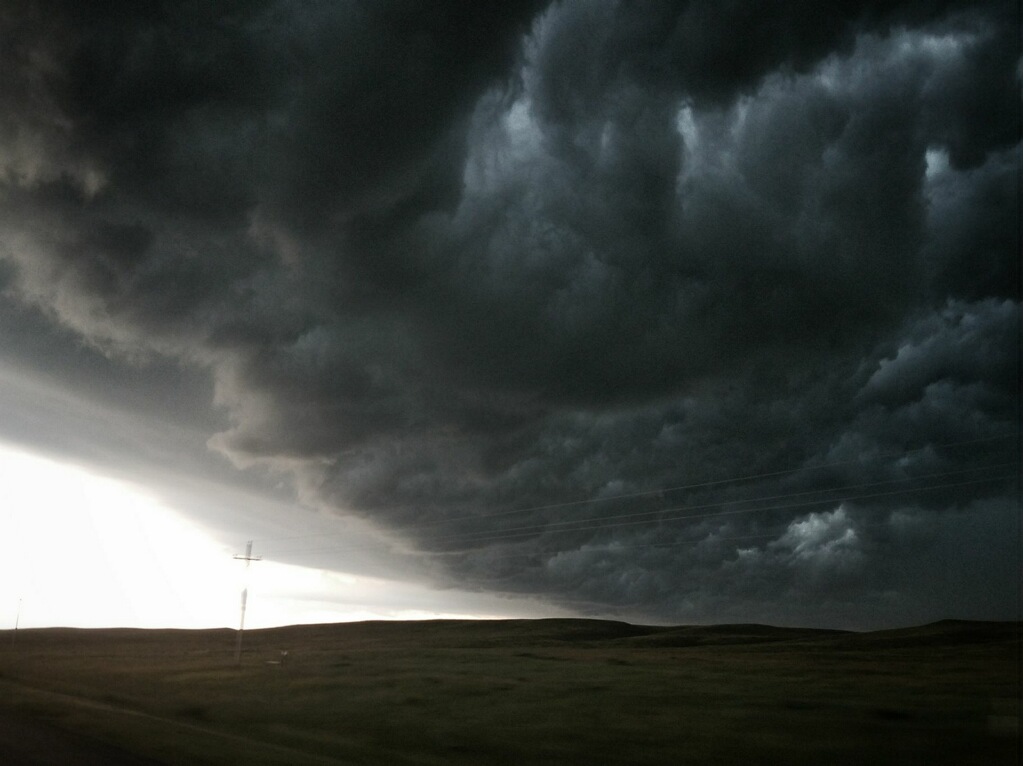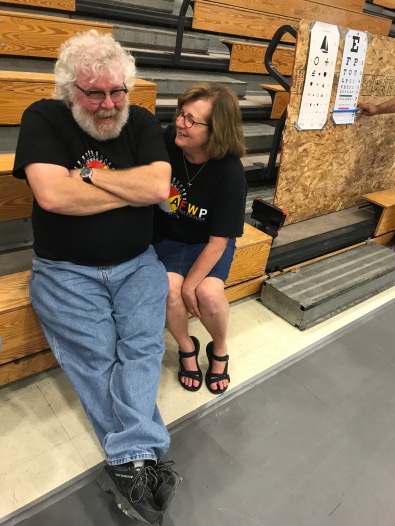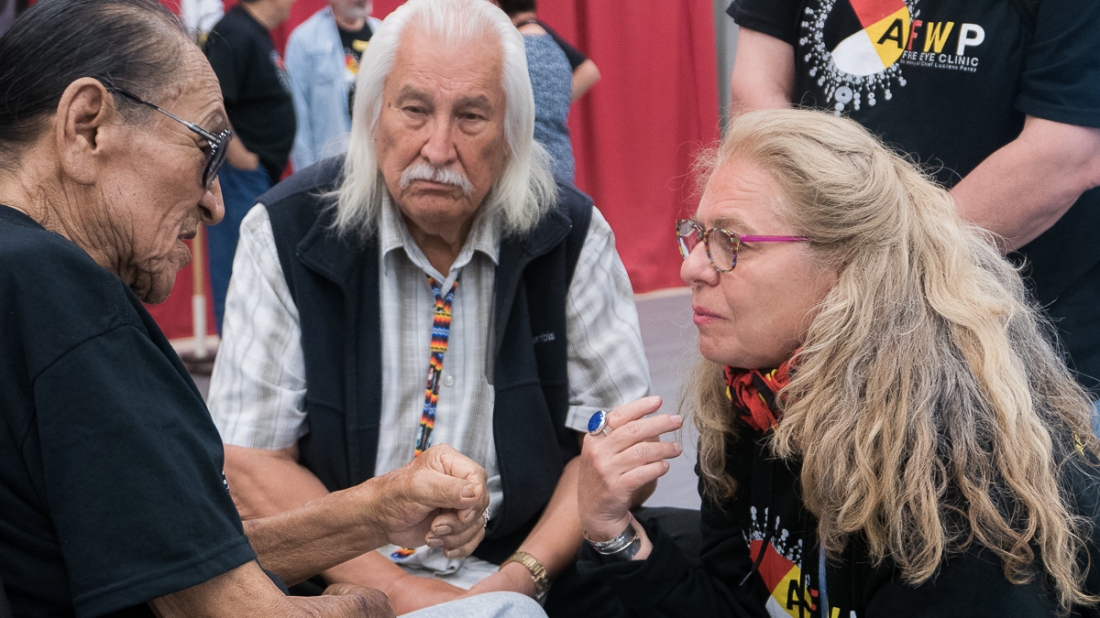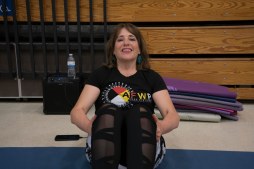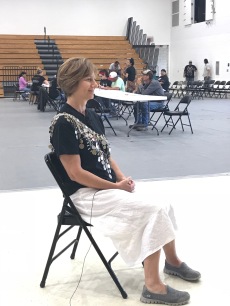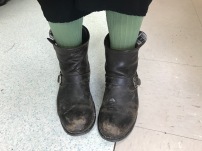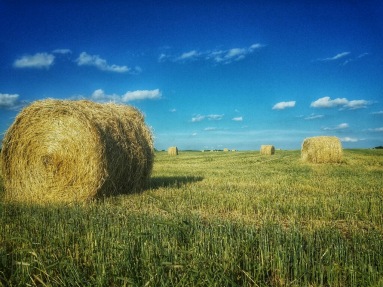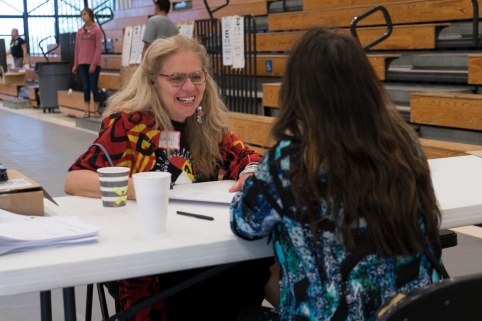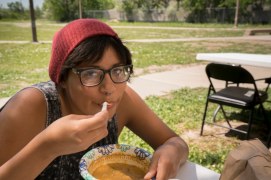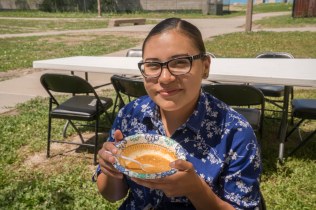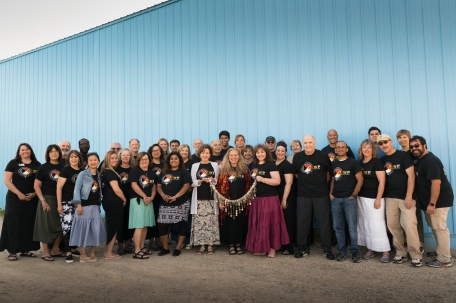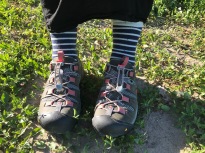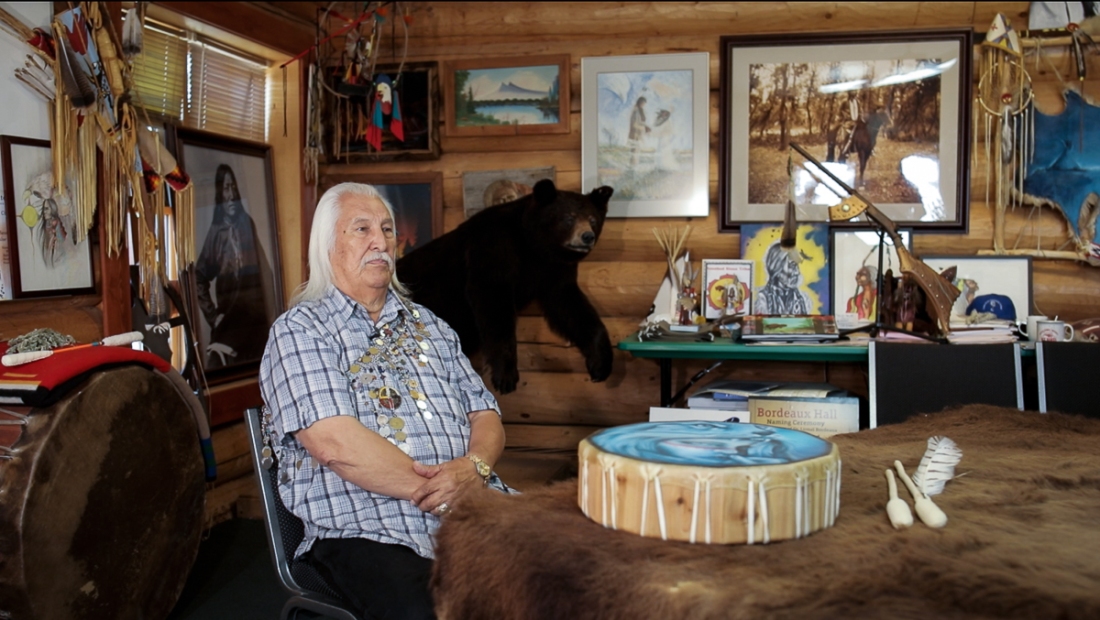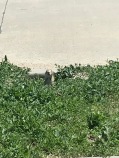
Mission accomplished. We exceeded our goal of 1250 patients, actually seeing 1300 people. Ray Dennis shared that they made over 1000 prescriptions for glasses, far more than on any other clinic mission he has joined. The high amount of astigmatism that the doctors saw is unusual, particularly because many of the children have the condition. Dr. Wendy Nelson-Evans, who is on her first mission clinic, explained that it is not an illness, but is the shape of the eye-like a football instead of round—and it is important that children are screened and corrective lenses used, ideally before they are age 6. If they do not receive and wear the corrective lenses in time, they will not be able to benefit from lenses later. This knowledge confirmed the importance of the work the medical team of the AFWP NATIVE EYES free clinic performed.
A special thanks to Dr. Lionel Bordeaux, President of Sinte Gleska University. He was present at all events and ceremonies. He visited every day, shaking hands with every person in the Multipurpose Building—SGU staff, patients, clinic staff, and volunteers. His presence signaled to all that he fully supported Wendy Black-Nasta, Artists for World Peace, and the Native Eyes clinic. At the closing ceremony, he presented to Wendy a handmade red ribbon shawl, an “honor shawl” handmade specifically for Wendy. He also presented drumsticks to people he designated as leaders: Wendy, Dr. Tom Bates, our elder, and Amelia Lord, our chef, and Ray Dennis, in honor of their work and spirit. On our way out of town to our motel, we saw an SGU scrolling banner, thanking Wendy and the NATIVE EYES clinic.
President Lionel Bordeaux, Wilma Bear Shield Robertson, Deborah Bordeaux, Roger Ellert Jr. , Maxine Bordeaux, Terry Grey, Cheryl Medearis, Gina,the faculty, students, staff and administrators of Sinte Gleska University helped smooth the organization and logistics of the entire week. I know some provided gas money to families to be able to come for their eye exams. Our work could not have happened without them.
I would like to recognize the devotion of the doctors, technicians, documentary team, and lifestyle coaches, and all volunteers who made this clinic possible. Those who are freelance and self-employed sacrificed days of potential income. Moreover, all of the volunteers from Artists for World Peace, A Promise to Peru, Middlesex Community College, and Vision Health International paid for their airfare, lodging, rental cars and food that Amelia cooked for us as well as dinners that we ate after work.
No slackers came on this trip. An eye clinic complete with reception area, registration, acuity, eye pressure, ophthalmology room and optical centers mushroomed up in less than three hours. A complete professional kitchen was stocked and organized in the same amount of time, with donations from the AFWP Council of Elders back in Connecticut. It is truly remarkable how all the different groups of people, many of whom did not know each other before arriving at Rosebud Reservation, clicked together to create a professional eye clinic facility.
After we welcomed the last patients of the clinic, we closed this week with the giveaway, a traditional gift giving. Robin Wall Kimmerer (2013) shares a profound definition of wealth for tribal nations: “Generosity is simultaneously a moral and material imperative, especially among people who live close to the land and know its waves of plenty and scarcity. Where the well-being of one is linked to the well-being of all. Wealth among traditional people is measured by having enough to give away. Hoarding the gift, we become constipated with wealth, bloated with possessions, too heavy to join the dance” (p 381). As we learned during a dance demonstration program, dancing is an essential part of life for enjoyment and removing stress. If you would like to continue to dance, please donate to Artists for World Peace so that we can continue to provide much needed services to Rosebud Reservation, We thank all of our supporters for the help that made it possible for us to offer free eye care to the people of the Rosebud Reservation, and hope that support continues so that we can grow the sustainable programs that we envision in the future for Rosebud.
The reveal of the day is a thank you to Sock Guys for contributing over a thousand pairs of socks to the Rosebud Community.
